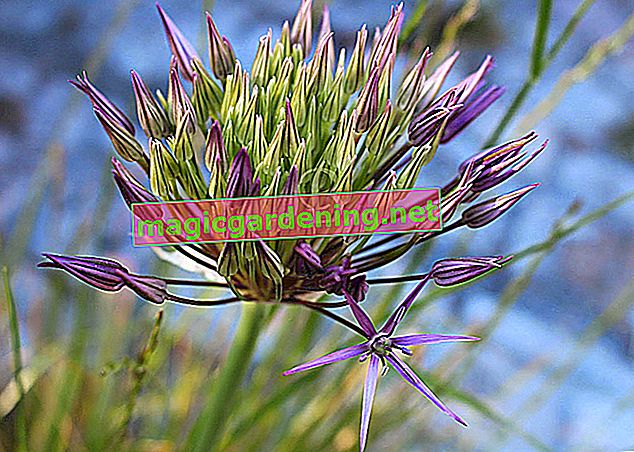
When does the ornamental onion usually fade?
The end of the flowering period depends on which type and variety it is. There are species like the blue ornamental onion that can bloom as early as March. But the majority of them only bloom from May and then into June.
also read
- How toxic is the ornamental onion?
- About the flowering period of the ornamental onion
- Instructions - pull the ornamental onion from seeds
There are also isolated specimens that bloom in August and through to September. So take a good look at your ornamental onion! Then you know when the flowering period is over. Often the leaves are completely dried up towards the end of the flowering period.
Remove the inflorescence after flowering - not necessary
For most perennials, the flowers are cut off after the flowering period. The point is to protect the plant. Otherwise she would train her seeds, which costs her a lot of strength. It is the same with ornamental onions.
But if you want to win the seeds for propagation or use the seed heads as ornaments in the autumn and winter in the bed, you do not necessarily need to remove the flowers. With a proper application of fertilizer in spring, the nutrient requirement is balanced again.
Allowing seeds to mature - self-sowing or sowing
If you want to harvest the seeds or if you intend for the ornamental onion to reproduce via self-sowing, you should not cut the flowers. With targeted sowing in late autumn or spring, you should make sure to harvest the seeds in good time. The seeds should be black in color. Caution: They quickly fall from the seed stand when ripe!
After flowering, slowly prepare for winter
This is important after flowering:
- no longer fertilize
- no longer pour
- better cut down in autumn
- Cover with brushwood in autumn
- or: dig up the onion and overwinter (for frost-sensitive species)
- If necessary, dig up and separate brood onions
Tips
If you want to remove the inflorescence, cut it right above the ground. If you want, you can still use it as an element for drying arrangements.








